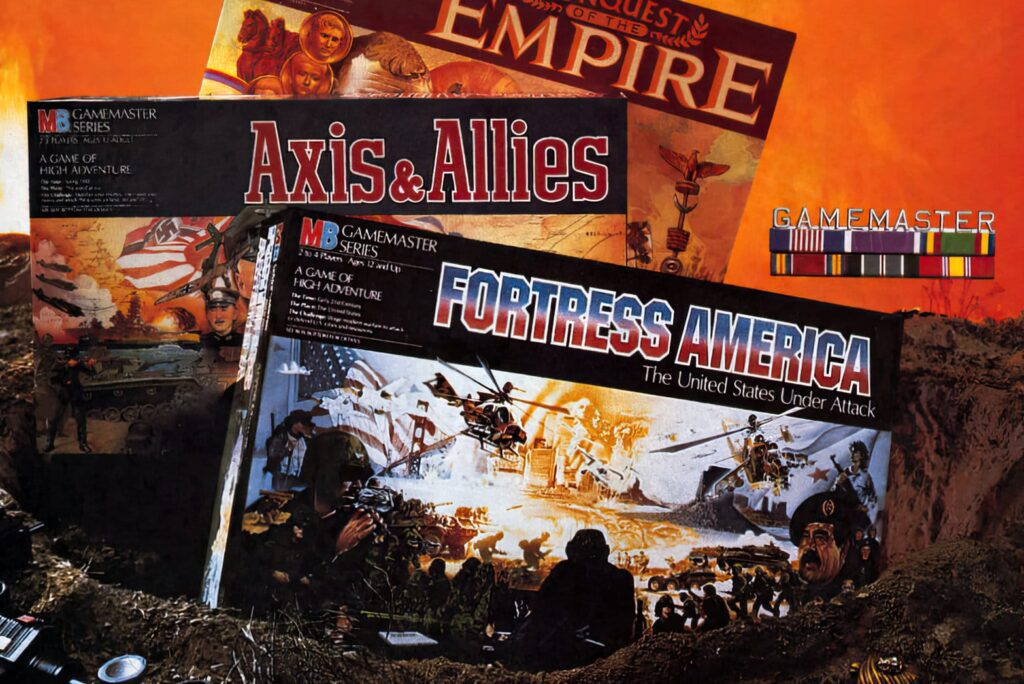Axis and Allies is a board game that immerses players in the conflict of World War II. The game is known for its intricate gameplay, detailed miniatures, and historical accuracy. The game has five different factions, each with its own unique strengths and weaknesses, and territories are worth a set number of industrial production units, reflecting their value during the war. Over the years, the game has gone through numerous editions and expansions, adding new elements and mechanics to keep it fresh and engaging. Axis and Allies is a must-play game for strategy game enthusiasts and history buffs alike.
Axis and Allies: The Iconic World War II Strategy Board Game That Never Gets Old
Axis and Allies is a classic strategy board game that simulates the conflict of World War II. It was first released in 1984 and has become a timeless classic, having gone through numerous editions and expansions over the years. The game is known for its intricate gameplay, detailed miniatures, and historical accuracy, making it a favorite among history buffs and strategy game enthusiasts alike. In this article, we’ll explore the different elements that make Axis and Allies such a timeless classic.
Gameplay
At its core, Axis and Allies is a simple game of military strategy. The board is divided into territories, each of which is worth a certain number of industrial production units (IPUs). Players take turns to move their armies, build new units, and engage in battles with each other. The aim of the game is to capture the enemy’s capital city while defending your own.
The game has five different factions: The United States, Great Britain, the Soviet Union, Germany, and Japan. Each faction has its own unique strengths and weaknesses, adding to the strategic depth of the game. For example, the United States has a vast production capacity but is slow to mobilize, while Japan has a smaller but more agile navy.
Players have a wide range of units at their disposal, including infantry, tanks, planes, and ships. These units are represented by plastic miniatures, which add a visual element to the game and make it more immersive. Combat is resolved using a set of dice, with different units having different values depending on their strength and abilities.
Historical Accuracy
One of the reasons why Axis and Allies has remained so popular over the years is its attention to historical accuracy. The game is set in the years leading up to and during World War II, and many of the events that occurred during that time period are reflected in the game’s mechanics and rules.
For example, territories are worth a set number of IPUs, which represents their value in terms of industrial production. The more valuable a territory is, the more units can be produced there. This system reflects the strategic importance of certain territories during the war, such as the oil-rich Middle East or the industrial heartlands of Germany.
Similarly, the factions in the game have different starting positions and strengths, reflecting their real-world counterparts. The Soviet Union starts off with a large army but a limited production capacity, while Germany has a smaller army but superior technology and weaponry. This attention to historical accuracy makes the game more engaging for history buffs and adds an extra layer of depth to the gameplay.
Expansions and Variants
Axis and Allies has gone through numerous editions and expansions over the years, adding new elements and mechanics to the game. Some of these expansions introduce new factions, maps, and units, while others focus on specific theaters of war or periods within the conflict.
For example, the “Europe” edition of the game focuses on the conflict between Germany and the Allied Powers in Europe, while the “Pacific” edition focuses on the conflict between Japan and the Allies in the Pacific theater. There are also stand-alone games such as “Axis and Allies: Guadalcanal” and “Axis and Allies: D-Day,” which focus on specific battles or campaigns within the war.
There are also many unofficial variants and mods of Axis and Allies, created by fans of the game. These variants often introduce new rules, factions, or mechanics, making the game even more diverse and engaging. Some of these variants are designed for specific play styles, such as “Axis and Allies: Global 1940,” which is designed for players who prefer longer, more complex games.
Conclusion
Axis and Allies is a timeless classic that has endured for over 30 years. Its intricate gameplay, historical accuracy, and detailed miniatures make it a favorite among strategy game enthusiasts and history buffs alike. The game has gone through numerous editions and expansions over the years, adding new elements and mechanics to keep it fresh and engaging. Whether you’re a seasoned veteran or a new player, Axis and Allies is a must-play game that is sure to provide hours of entertainment.
